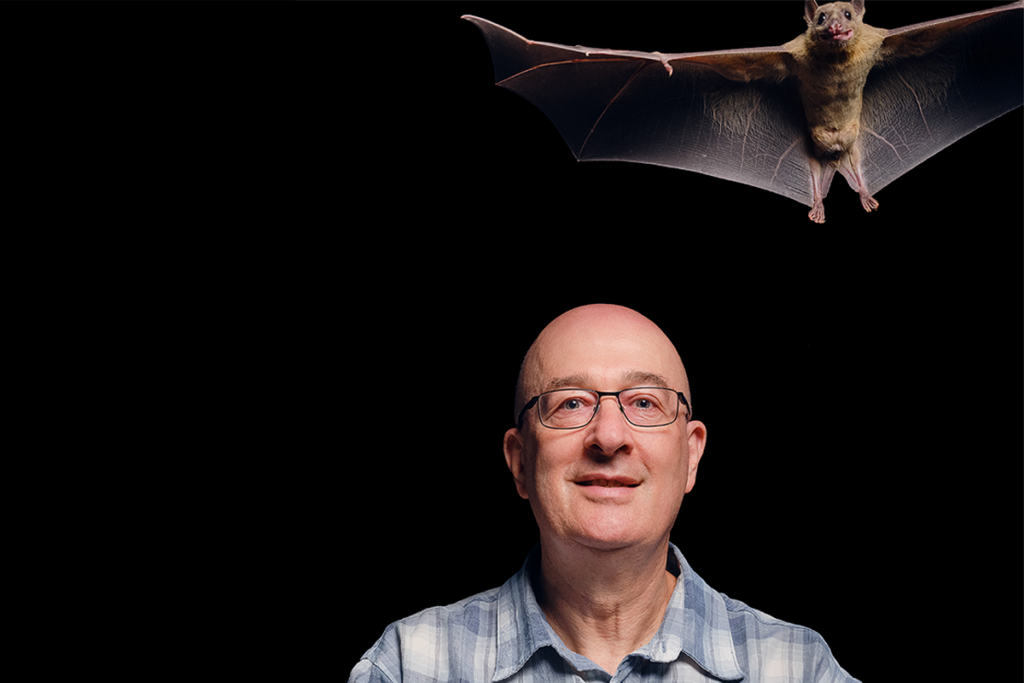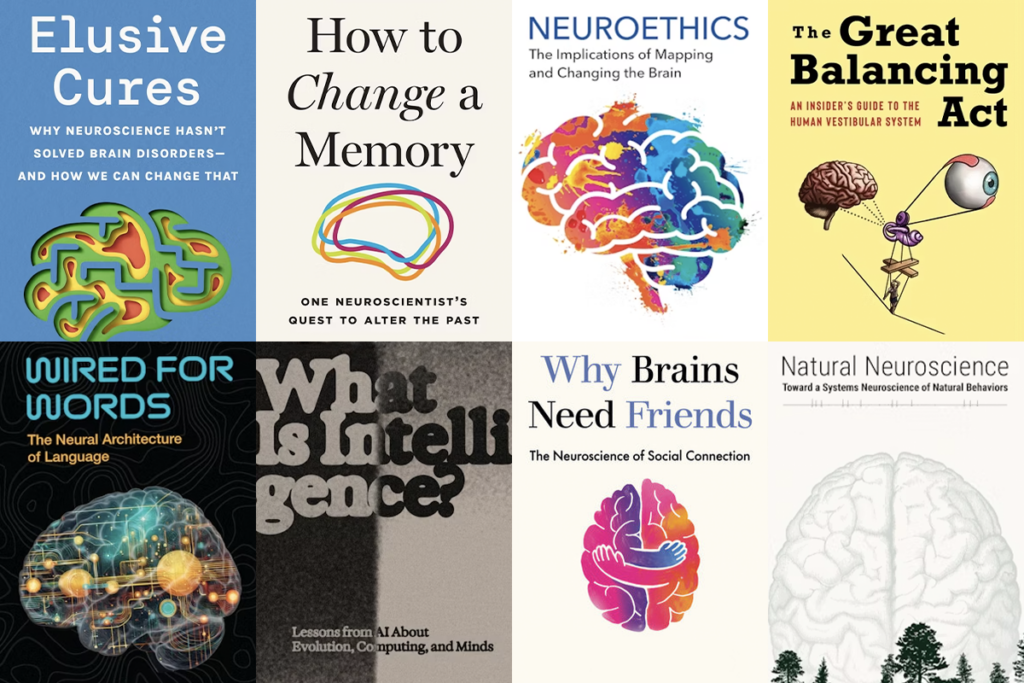The Transmitter’s New Lab Directory features more than 80 neuroscience labs that opened in 2024 and 2025, plus several slated to launch in 2026. Are you a new principal investigator? Email Francisco J. Rivera Rosario at [email protected] for future new-lab roundups.
Labs are listed by year and in alphabetical order. The Transmitter has interviewed some of these new principal investigators as part of our Liftoff Q&A series.
2026
Dah-eun (Chloe) Chung, Rutgers University
Chung’s lab will study what drives or suppresses the buildup of abnormal proteins in the brain.
Alexandra Decker, Washington University in St. Louis
Decker’s lab will study how children and adults learn and remember, and how these processes change across development.
Sven Dorkenwald, McGovern Institute for Brain Research, Massachusetts Institute of Technology
Dorkenwald’s lab will use connectomics to study the organizational principles of neuronal circuits.
Emily Aery Jones, University of Maryland, Baltimore
Aery Jones’ lab aims to dissect how the hippocampus can flexibly perform distinct computations to support spatial memory and how these degrade in aging and Alzheimer’s disease.
Qihong Lu, City University of Hong Kong
Lu’s lab aims to use neural network models as “model organisms” to understand what neural architecture is effective for the cognitive computational problems that brains must solve.
Hannah Payne, New York University
Payne’s lab will study how memory, perception and internal brain states interact in the brain.
Catherine Schretter, Southern Methodist University
Schretter’s lab will study the genetic and neuronal mechanisms regulating social interactions in flies.
Zuri Sullivan, Whitehead Research Institute
Sullivan aims to understand brain-immune system interactions during infection.
Christopher Zimmerman, University of Utah
Zimmerman’s lab will investigate how the brain and body communicate, with a focus on understanding how feedback signals from the internal organs influence learning and memory systems in the brain.
2025
Samira Abdulai-Saiku, Temple University
Abdulai-Saiku studies how sex differences in mice contribute to differences in cognitive aging between males and females.
Mehran Ahmadlou, University of Oxford
Ahmadlou’s lab aims to understand how the brain adjusts its actions in response to changing goals, environments and internal needs.
Cheen Euong Ang, Icahn School of Medicine at Mount Sinai
Ang uses stem cells to study neuronal cellular plasticity, maintenance of cell fates and dedifferentiation.
Ryan Ash, University of California, San Francisco
Ash’s lab is developing image-guided transcranial focused ultrasound technologies to rebalance synaptic stability and plasticity in the brain as a treatment for neuronal disorders.
Nicholas Audette, University of Connecticut
Audette’s lab investigates how sensory processing changes across contexts to understand how brains process information.
Vlad Ayzenberg, Temple University
“The goal of my lab is to understand how the human brain is organized at birth to support the rapid development of cognitive and perceptual abilities, and to use this understanding to create more human-like artificial-intelligence agents.”
Jerome Beetz, University of Wuerzburg
“We study the spatial memory of insects by focusing on honeybees. Aside from humans, honeybees are the only known species that communicate spatial information to conspecifics. To do this, bees dance on vertical combs inside the hive and in complete darkness. Dance duration and direction correlate with the communication of a spatial goal, such as a food source, for example. Hive mates extract distance and directional information that guide them to their goal. Using neural recordings from freely walking, dancing and tethered flying bees, we study how spatial memory is represented in the insect brain.”
Ashley Brandebura, University of Virginia
Brandebura’s research is focused on understanding how astrocytes, and their crosstalk with other glial cells and cells composing the blood-brain barrier, contribute to neuroinflammation and synaptic dyshomeostasis in neurodevelopmental and neurodegenerative disorders.
Jocelyn Breton, Smith College
“The goal of my lab is to understand how experiencing stress during key developmental periods affects the brain and ultimately alters motivated behaviors. Experiencing early-life stress is unfortunately very common in both the United States and around the world, and we know that such experiences can increase the risk for developing psychiatric disorders later in life. One of the aims of my lab is to explore what’s changing in the brain, especially in reward pathways. Ultimately, I hope my work will inform treatments and interventions for individuals at risk.”
Mattia Chini, University of Liège
Chini’s lab studies early brain development at the intersection of systems and computational neuroscience.
Thomas Elston, University of Texas at Austin
“My lab leverages decoding and multisite Neuropixels recordings to understand how the frontal lobe regulates the striatum to enable self-control and how it modulates sensory systems to enable feature-based attention. I am particularly excited about our ability to decode cognitive processes in real time. We hope to harness our findings to develop the next generation of brain-computer interfaces, which will improve the lives of people living with disorders of cognitive control, such as addiction, attention-deficit/hyperactivity disorder and obsessive-compulsive disorder.”
Tanya Gupta, Santa Clara University
Gupta studies how the brain adjusts its computations to change behavior when the environment changes and how regions in the prefrontal cortex interact with each other to control decisions.
Elizabeth Haynes, University of Wisconsin-Madison
Haynes studies how microglia adapt to the needs of the growing and aging brain.
Luis Hernandez-Nunez, Stanford University
Hernandez-Nunez’s lab seeks to understand how organ physiology is detected by autonomic sensory neurons and how these neurons modulate brain function and behavior.
David Herzfeld, University of Wisconsin-Madison
The Herzfeld Lab studies how neural circuits in the brain control complex behaviors such as motor response and decision-making.
Mehmet Keleş, Johns Hopkins University
Keleş combines high-resolution behavioral recordings with cutting-edge machine-learning techniques to study sleep behavior in flies.
Andrew Kesner, Indiana University Indianapolis
“My lab investigates neural circuits involved in goal-directed behavior through the lens of addiction/substance use disorder, focusing on pathways that aren’t typically thought of as part of the canonical reward system. We also emphasize understanding how sleep and sleep circuits are involved in reward-seeking, given that sleep disruption is commonly associated with psychiatric disorders related to aberrant reward-seeking, such as substance use disorders. Many people report having trouble with sleep during abstinence, so much so that sleep disruption can be a potent driver of relapse. It is really difficult to study this in humans because of chicken-and-egg problems. Were these people bad sleepers before their substance misuse? Or did the chronic drug use drive what is seen during abstinence? Fortunately, we now have the tools and techniques to begin to understand this phenomenon in the setting. I am very excited to figure out how misused substances, such as cannabis and alcohol, alter the brain to drive sleep disturbances during withdrawal.”
Heather Kosakowski, University of Southern California
Kosakowski’s lab uses neuroimaging and behavioral and computational methods to study brain development in infants, children and adults.
Daniel Levenstein, Yale University
The Levenstein Lab uses artificial networks to study how interactions between the hippocampus and the rest of the brain extract generalized knowledge from hippocampal “replay.”
Ting-Feng Lin, Utrecht University
Lin’s lab studies the mechanisms of learning and memory, with a particular focus on the cerebellum.
Laureline Logiaco, University of Colorado Anschutz Medical Campus
Logiaco’s lab aims to uncover actionable principles through which brain circuits generate behavior by leveraging recent advances in multi-region modeling and analyses of large-scale neuronal recordings.
Francesca Mastrogiuseppe, International School for Advanced Studies
Mastrogiuseppe’s lab develops tools to understand how complex dynamics and computations emerge from the coordinated activity of large circuits in the brain.
Katherine Matho, Keck School of Medicine of the University of Southern California
Matho uses developmental neuroscience, molecular genetics and multiscale circuit mapping to study cortical sensorimotor circuits underlying goal-directed actions and perception.
Javier Emperador Melero, New York University
Emperador Melero’s lab studies the organization and assembly of the protein machinery that enables synaptic transmission.
Jacob Miller, University of Miami
“We are interested in how the architecture of the brain supports the remarkable array of higher-order cognition and human behaviors. For example, what brain circuits and processes support memory and cognitive control, and how are they implemented to enable flexible behavior? Why is the human brain limited in memory and processing capacity? And how do our short- and long-term memory systems interact with each other? I’m excited to extend the approaches and ideas of longitudinal, individualized experimental designs for human neuroimaging to a wider array of questions. How might memory representations and processes change not only across learning, but over long timescales of aging and cognitive decline?”
Alice Mosberger, New York University
Mosberger investigates how high-order brain areas integrate sensory feedback from ascending pathways and send their commands through different descending pathways to generate motor function.
Samuel Muscinelli, University of Chicago
“My lab aims to understand how the anatomical structure of brain circuits shapes learning and adapts in response to it. As a theorist, I approach this question from multiple perspectives across different brain regions, using a combination of analytical theory, machine learning and data analysis. I’m especially excited about the growing availability of detailed data on neuronal connectivity, which presents an opportunity to use computational modeling to explore how structural features influence brain function.”
Suzanne Nolan, Illinois State University
Nolan’s lab seeks to understand how developmental changes in the dopamine system shape vulnerability to neuropsychiatric disorders.
Clara Ortega de San Luis, Universidad de Jaén
Ortega de San Luis studies how memories are formed, stored and retrieved at the cellular and molecular levels.
Rachel Parkinson, Queen Mary University London
“My lab focuses on how environmental stressors, such as pesticides, nutritional deficits and thermal extremes, affect the brain and behavior of insect pollinators. We develop high-throughput methods to study sublethal effects and build predictive models that generalize across species, including those that are difficult to test directly. Our key questions include: How do pollutants alter sensory processing and behavioral decisions in bees? How can we use AI to accelerate biological data synthesis, and how reliable and interpretable are these tools for scientific discovery? The flood of disconnected studies on environmental impacts is overwhelming, and I want to change that. I’m most excited about building tools that bridge disciplines—bringing together ecotoxicology, neurobiology and AI. Though my core passion is understanding sensory systems and animal decision-making, I’m increasingly driven by a broader goal: helping the scientific community extract clearer insights from complex data and accelerate environmental risk assessment.”
Mary Patton, University of Tennessee Health Science Center
Patton’s lab studies the molecular mechanisms of anhedonia and lack of motivation associated with psychiatric disorders such as schizophrenia.
Vivian Paulun, University of Wisconsin-Madison
“My lab’s research program seeks to explain a fundamental human ability—visual intuitive physics, our ability to understand the physics of a scene at a glance. Whenever we open our eyes, we instantly infer the physical properties of objects, the relationships between them, the forces acting on them and what is likely to happen next. This ability is an essential component of intelligent behavior: We cannot take a single step forward without first determining if the surface will support our weight and whether the road ahead is slippery, and we cannot pick up an object without first determining its approximate mass, rigidity and friction. How the brain infers the physical structure of the outside world from the patterns of light entering our eyes remains a major scientific challenge that I want to tackle in my lab.”
Shawn Rhoads, Icahn School of Medicine at Mount Sinai
Rhoads is interested in understanding how disruptions in social cognition are linked to psychiatric symptoms and aims to translate this research for application in medicine and policy.
Manuel Schottdorf, University of Delaware
Schottdorf’s lab aims to link the psychology of perception, memory and reasoning to the coordinated activity of single neurons in mice that learn to solve complex problems in virtual reality.
Anna Schroeder, Ludwig Maximilian University Munich
Schroeder’s lab studies how internal states—emotions, motivations and physiological needs—emerge from neural circuits to guide behavior.
Yuta Senzai, Northwestern University
Senzai is interested in studying how the brain’s internal model of the world emerges from complex interactions between neuronal circuits and the external environment.
Mari Sepp, University of Tartu
Sepp’s research interests involve elucidating the molecular mechanisms that connect genotypes to phenotypes in neurodevelopmental conditions.
Brynn Sherman, Ohio State University
The Sherman Lab studies the mechanisms that regulate cognitive shifts between episodic memory and statistical learning in the brain.
Sophia Shi, Harvard University
“My lab investigates the molecular mechanisms underlying brain aging and neurodegenerative disease, with a focus on glycans—complex sugars that decorate cell surfaces and shape the brain’s extracellular environment. Although glycans play essential roles throughout biology, their functions in the nervous system remain largely unexplored, which makes them incredibly exciting to research. Studying brain glycobiology feels like exploring an entirely new planet, where we’re just beginning to decode its fundamental rules and language. I’m driven by the challenge of unraveling how these molecules influence brain function and using that knowledge to guide new treatments for neurological and neurodegenerative diseases.”
Leon Smyth, Monash University
Smyth studies how the nervous and immune systems interact at border tissues.
Janet Song, Harvard University
“My lab studies the genetic basis of how the human brain evolved and how human-specific changes to the brain affect neurological diseases. I hope that work from my lab will make it possible to quickly and accurately pinpoint the exact human-specific genetic variants that underlie specific traits that have evolved in humans, such as larger brain size and changes in neural connectivity. Most work on the genetics of the human brain has focused on cell types, but our brain is so much more than a static collection of cells. I’m interested in using genetic and genomic approaches to study neural circuitry formation and evolution, and examine how the brain interacts with environmental perturbations.”
Marielena Sosa, University of Colorado Boulder
The Sosa Lab uses spatial navigation in rodents as a model system to study how information is stored in memory and recalled for decision-making.
Sergio Hidalgo Sotelo, Washington State University
“Biological rhythms are ubiquitous, which means there is an endless array of potential research questions to explore—each one more interesting than the last. In my lab, we aim to understand the molecular origins of structural and functional differences observed in circadian circuits under different seasonal conditions. I’m particularly excited about this work because I believe it will advance our understanding of seasonal affective disorder and how circadian rhythms affect other illnesses, such as Parkinson’s disease and Alzheimer’s disease.”
Yanjun Sun, University of Texas Health Center at Houston
Sun’s research focuses on uncovering the neural circuit mechanisms underlying learning and memory.
Vaibhav Tripathi, Indian Institute of Technology Gandhinagar
Tripathi’s lab investigates the localization and dynamics of cognitive functions, how these processes are disrupted in cognitive disorders, and whether predictive models can be developed to better understand and diagnose these conditions.
Ondřej Zíka, University College Dublin
Zíka will study the role of uncertainty and inferential processes in mental health, using computational, behavioral and imaging methods.
2024
Ismail Ahmed, University of Utah
Ahmed studies how neuropeptide signaling modulates behavior and physiology in health and disease.
Alexandra Castillo-Ruiz, Michigan State University
Castillo-Ruiz’s lab investigates the effects of the microbiota and birth mode—cesarean vs. vaginal birth—on brain development.
Isabel Christie, University of Sheffield
“My lab studies oxygen homeostasis in the brain. Our research focuses on understanding how the brain ensures it receives adequate oxygen and how oxygen insufficiency contributes to age-related cognitive impairment. In the past I have used magnetic resonance imaging (MRI) methods like arterial spin labeling to study brain blood flow. For my future research I am excited to start using hyperpolarized xenon. This is a gaseous MRI contrast agent that diffuses into the brain tissue a bit like oxygen. Hyperpolarized xenon is already used in human research, so the chances of translating my findings to humans is very high. I am excited about working with physicists to probe how gas exchange in the brain might be characterized and measured.”
Kauê Costa, University of Alabama at Birmingham
“My lab aims to understand the neurobiological mechanisms of learning. Our research questions focus on how frontal cortical circuits and neuromodulatory signaling in the basal ganglia regulate this process. To answer these questions, we use a combination of behavioral, systems, cellular and genetic tools in rat models, combined with computational modeling of learning and neural function. Most research in the field focuses on explicit learning, using tasks in which learning produces rapid changes in behavioral responses. However, arguably most ‘real-world’ learning is latent, which is when we acquire information without immediately changing how we act, but can still use that information to guide future behavior. In my lab, we are digging into the mechanisms of latent learning to uncover how the brain decides on what to learn and when to use the acquired information. These are challenging but extremely exciting and informative experiments, which offer unique insight into the inner workings of the brain.”
Michael-John Dolan, Trinity College Dublin
Dolan’s lab seeks to understand the different subtypes or “states” that microglia can adopt and how these cells shift their identity and behavior depending on what’s happening in the brain.
Lea Duncker, Columbia University
Duncker’s lab develops theoretical and mathematical models of movement to understand learning and decision-making.
Laura Driscoll, Allen Institute for Neural Dynamics
Driscoll’s group uses artificial-network simulations to study how humans and animals recognize similarities between new contexts and past experiences.
Ana González-Rueda, University of Glasgow
“In my lab, we want to understand how brain circuits adapt to support flexible behavior. Our work focuses on how sensory information gets turned into action, and how this process changes depending on context, internal state or behavioral demands. The big question is: How do sensorimotor circuits stay flexible while remaining functional in the face of change? Humans have evolved to be highly adaptable, not just to learn new things but also to flexibly respond to changing internal states and environmental conditions. I’m fascinated by the mechanisms—including synaptic plasticity, changes in neuronal excitability and structural rewiring—that allow circuits to adapt in real time to support different behavioral demands.”
Lana Ruvolo Grasser, Wayne State University
Ruvolo Grasser aims to identify how experiences reshape the developing nervous system in adolescence and how changes in the nervous system may serve as indicators of risk and resilience for emotions like post-traumatic stress and anxiety.
Ezgi Hacisuleyman, University of Florida
“My lab focuses on uncovering how synapses—specifically those located far from the soma—respond to stimuli. To do that, we investigate activity-dependent synaptic RNA localization, translational control and metabolic regulation. By uncovering how these processes differ across cells, we aim to identify the unique molecular mechanisms that set neurons apart. I am particularly excited to expand on the tools I developed during my postdoc and to create new methodologies to investigate mitochondrial regulation at synapses in response to neuronal activity.”
Lauren Faget Hotchkiss, Boise State University
“My lab’s research goals are to identify the neural basis of reward and motivated behaviors and to investigate the adaptation and dysregulation of these neural circuits in neuropsychiatric disorders associated with reward function deficits.”
Chinyere Agbaegbu Iweka, Case Western Reserve University School of Medicine
Agbaegbu Iweka’s research focuses on understanding circadian clock mechanisms and how they are disrupted in conditions such as age-related immune dysfunction, metabolic and sleep disorders, stroke and vascular dementia.
Abhilasha Joshi, National Center for Biological Sciences, Tata Institute of Fundamental Research
The Joshi Lab aims to understand the fast-timescale temporal relationships between internal cognitive computations and ongoing actions.
Arielle Keller, University of Connecticut
“I’m particularly excited about studying attention. In my lab, we aim to understand how the brain focuses on what’s important amid constant distractions. We use noninvasive neuroimaging tools such as functional MRI and EEG to understand how attention changes in the context of mental illness, and how it develops adaptively throughout childhood and adolescence. I’m excited to use person-specific brain mapping to better understand what makes each of our individual brains unique.”
Shan Meltzer, Vanderbilt University
Meltzer combines mouse genetics, transcriptomics, physiology and behavioral tools to study the genes and cells that regulate somatosensation development.
Tyler Miller, Case Western Reserve University School of Medicine
Miller studies the role of myeloid cells in brain tumor development.
Martin Munz, University of Alberta
Munz studies the development and function of neuronal circuits and the mechanisms underlying neurodevelopmental conditions such as autism.
Jatin Nagpal, University College Cork
Nagpal studies the microbiota-gut-brain axis and its relationship with stress in zebrafish and the nematode worm Caenorhabditis elegans.
Matthias Nau, Vrije Universiteit Amsterdam
“My lab investigates the general principles underlying active vision and memory through naturalistic multi-task studies, behavioral tracking and neuroimaging. We aim to identify behavioral and neural patterns shared across perception, memory and imagery tasks, and to understand how these patterns relate to participants’ reported experiences. Our work is grounded in the idea that common mechanisms underlie experiences across domains typically studied using separate, specialized tasks, and that new generalizable concepts are needed to describe them. As part of this research, we also develop open-source AI tools for cognitive neuroscience, such as camera-free magnetic resonance-based eye tracking. I’m excited every day that my work lets me explore the most fascinating questions, like how mental and physiological states relate and how we can create theories and tools to explain them together. Alongside fMRI and eye tracking, we are also exploring new techniques, like combined EEG and voice recordings. It makes me feel like a student as much as a teacher, and that’s exciting.”
Aran Nayebi, Carnegie Mellon University
“In my lab, we aim to uncover the fundamental principles of intelligence by reverse-engineering the brain’s computations and using those insights to build life-long learning agents. We ask: How do animals transform continuous sensory inputs into meaningful physical actions, and how can we translate that into better artificial intelligence? I’m excited about using neuroscience to push AI beyond static benchmarks—toward real-world, embodied intelligence. The idea that understanding the brain’s algorithms could unlock more autonomous and adaptive robots is what drives me.”
Jean-Paul Noel, University of Minnesota Twin Cities
“In my lab, we study how the brain takes in sensory information and infers the state of the environment. Conducting experiments in both rodents and humans, we attempt to ‘trick’ observers into misperceiving the environment, causing perceptual illusions or hallucinations, and then try to understand what neural mechanisms led to these illusions. I am excited to use novel technologies that enable us to record from many thousands of neurons simultaneously, even in freely moving contexts. For me, understanding the brain means being able to bridge levels of description—from single cells to neural populations—to behavior. I am excited to leverage different models for the level of description they afford: complex behaviors in humans and single-cell resolution in rodents.”
Amy Poe, University of Arkansas
Poe is interested in understanding the neural circuitry that coordinates rhythmic behaviors, such as sleeping and feeding, in flies.
Chen Ran, Scripps Research
Ran studies how the nervous system detects mechanical, chemical and thermal stimuli from the periphery to turn them into internal sensations, such as satiety, hunger, nausea, hypoxia and pain.
Marissa Scavuzzo, Case Western Reserve University School of Medicine
“My lab is interested in understanding how a cell maintains its functional identity. The gut is a highly fluctuating and complex environment. We know glial cells are highly plastic and glia in the enteric nervous system interact with a multitude of cell types. We aim to understand how enteric glial cells in the gut function and how these functions are maintained amidst this vacillating milieu.”
Taylor Sheahan, Medical College of Wisconsin
“My lab studies how our nervous system senses and responds to dangers in our environment—in particular, things that are itchy or painful. These are meant to be protective sensations but can go awry and cause unbearable diseases such as chronic itch or chronic pain. We study how these sensations are typically encoded, what changes occur in disease states and how to reverse them. I am especially interested in how neuropeptides—small proteins that neurons use to communicate with one another—shape itch and pain signaling. In the past five years, we’ve seen an explosion of new technologies to study neuropeptides, such as sensors that report when a neuropeptide binds to its receptor. I am excited to use these new methods to ask questions that we could not answer using previous approaches.”
Alex Wiesman, Simon Fraser University
Wiesman studies the effects of aging in brain signaling and the mechanisms that lead to neurodegenerative diseases.
Jie Zheng, University of California, Davis
Zheng’s lab investigates the neural mechanisms that govern cognitive functions in humans.






